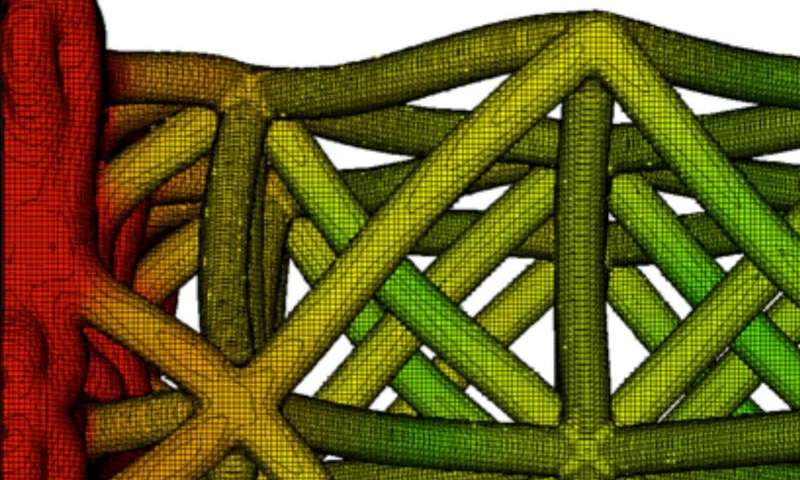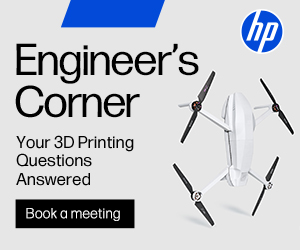LLNL: Researchers Pressure Test 3D Printed Lattices for Dynamic Load Strength
 As 3D printed parts begin to supersede traditional components in a number of sectors from automotive to aerospace and beyond, we expound on the benefits daily. The ability to customize, make smaller batch productions when necessary, allow for self-sustainability in production in the lab or even a developing country, and shaving substantial savings off the bottom line are exciting advancements—not to mention we get to use all this exciting new technology and equipment too. One major focus though in using 3D printing for a variety of parts is in offering comparable or greater strength. And that’s no joke in an engineering lab. If they are going to the trouble to use 3D printing technology, it needs to pass muster in holding up under dynamic load.
As 3D printed parts begin to supersede traditional components in a number of sectors from automotive to aerospace and beyond, we expound on the benefits daily. The ability to customize, make smaller batch productions when necessary, allow for self-sustainability in production in the lab or even a developing country, and shaving substantial savings off the bottom line are exciting advancements—not to mention we get to use all this exciting new technology and equipment too. One major focus though in using 3D printing for a variety of parts is in offering comparable or greater strength. And that’s no joke in an engineering lab. If they are going to the trouble to use 3D printing technology, it needs to pass muster in holding up under dynamic load.
Now, researchers at Lawrence Livermore National Laboratory (LLNL), with the support of their colleagues at Los Alamos National Laboratory, are evaluating these capabilities with a series of complex experiments on additively manufactured (AM) structured lattices. Their initial findings show that the structures have special properties not shown in disordered cellular materials.
Just published in the June 20th edition of Scientific Reports, the researchers discuss their findings in their paper, ‘Dynamic Behavior of Engineered Lattice Materials.’
“Cellular materials have received significant attention over the last several decades for their thermal, electrical, and optical properties, as well as for their potential as lighter weight replacements for bulk materials,” state the researchers in their paper.
While conventional materials require manipulation, according to the researchers, with the rising accessibility and use of 3D printing and additive manufacturing, this allows for more flexible architectures with which to work.
“The ability to organize the structure and composition at the mesoscopic scale allows the custom design of materials by applying structural engineering principles, like truss theory, at the micron length scale,” state the researchers. “This will open up the possibility of designing and engineering material properties to precisely meet the demands of the intended application.”
During this particular experiment, they discovered elastic deflection occurring ahead of the compaction front, along with the lattice supporting a precursor wave. This is a new development and something the researchers simply have not seen in disordered materials, with similarly dense traditional open-cell stochastic foams being a good example.
“The basic approach is to be able to use the collective properties of an engineered structure at the micron scale to influence the macromechanical response,” said LLNL materials scientist Mukul Kumar, and project lead.
For the study, they built models to test in terms of dynamic loading at the NNSA-sponsored Dynamic Compression Sector of the Advanced Photon Source at Argonne National Laboratory. There, they found that elastic and compaction behavior exhibits collective response rapidly under impact loading
“The investigation looked at two properties,” stated the researchers in their paper. “The first relates to the compaction of the lattice, which is characterized by a large change in density with the lattice structure breaking and collapsing. The second is the elastic properties associated with an initial compressive distortion of the lattice. Even through the samples are only 4 × 4 × 6 unit cells in size, we observe collective behavior in both the compaction and elastic dynamic properties of the lattice materials immediately after impact.”
The goal of the researchers is to first understand how the structures and compositions work at the mesoscopic scale, and then be able to organize them. Once they’ve mastered that, the hope is that they can custom design materials simply by using engineering principles such as truss theory, allowing for the materials to meet specific application requirements.
Test samples were made with two different engineered lattice architectures that exhibited the same density: an octet truss unit cell and a Kelvin unit cell. They were then compared with a stochastic foam, “where the ligament length-scale and bulk density were designed to match the structured lattice cells, but with no ordered topology.”
In reviewing their findings and concluding, they do allow that more testing is necessary on a larger scale, but at this point see that ‘collective properties only emerge in applications where the length scale of interest is large compared to the lattice length scale.’ The idea that these shock loading experiments can indeed offer a way to understanding the dynamic properties of the 3D printed lattice materials is a positive one. With further attention using larger samples, the researchers think they could examine both dispersion and attenuation of the elastic wave through the material further. Discuss further over in the LLNL Shock Load Experiments forum at 3DPB.com.
[Source: PhysOrg / Images: LLNL]Subscribe to Our Email Newsletter
Stay up-to-date on all the latest news from the 3D printing industry and receive information and offers from third party vendors.
Print Services
Upload your 3D Models and get them printed quickly and efficiently.
You May Also Like
Vienna Team Works to End Trial-and-Error in Hybrid 3D Printing Workflows
A new research project shows how 3D printing and machining can finally work in sync. Led by researchers at the Vienna University of Technology in Austria (TU Wien), the project...
3D Printing Financials: Stratasys Kicks Off 2025 with Fresh Cash and a Tight Grip on Strategy
Stratasys (Nasdaq: SSYS) started the year with strong momentum, adding fresh cash to its balance sheet and achieving profitability on an adjusted basis. The company also gained a new investor,...
Stifel’s AM Forward Fund Launches, Looking for US Manufacturers to Invest In
The need for greater resiliency in the defense supply chain is real and urgent. One area the US government has been focusing on is building a faster and more sustainable...
3D Printing Financials: Xometry Cuts Losses, Grows Platform
Xometry (Nasdaq: XMTR) is entering 2025 with momentum. The company delivered record quarterly revenue and narrowed its losses, showing progress toward profitability. More importantly, for those watching the future of...
































